The Cantonese Assembly Hall is a significant historical landmark in the ancient town of Hoi An. With architecture reminiscent of the Chinese, it attracts many visitors for exploration and discovery.
Located in the heart of Hoi An’s ancient town, the Cantonese Assembly Hall is a unique religious site for early Chinese settlers. If you’re planning a trip to Hoi’s streets, don’t forget to visit this unique location.
1. Address of the Cantonese Assembly Hall
Address: 176 Tran Phu Street, Hoi An City, Quang Nam Province.
Opening hours: 6 am – 4 pm
The Cantonese Assembly Hall sits on Tran Phu Heritage Street, with many unique architectural structures of significant historical significance. In the center of Hoi An’s ancient town, many tourists visit here daily to learn about the Cantonese Assembly Hall.
2. Exploring the Long History of the Cantonese Assembly Hall in Hoi An
2.1. Historical Origins of the Cantonese Assembly Hall
In the past, from the 15th to the 19th century, Hoi An’s ancient town was bustling with international trade, attracting many Chinese merchants to trade and settle here. The assembly hall was built in 1885 by a Chinese merchant. Initially dedicated to Confucius and the Holy Mother Thien Hau, after 1911, it was committed to the Worship of the Ancestors and Quan Cong.
It is considered an important religious and spiritual place for merchants and a community gathering place where they help each other in life and business.
2.2. Meaning of the Name Cantonese Assembly Hall in Hoi An
The Cantonese Assembly Hall is also known as the Guangzhao Assembly Hall or the Ong Temple because inside is the worship of Quan Cong, a famous Chinese general. According to Chinese beliefs, Quan Cong, embodying the six virtues of loyalty, righteousness, trustworthiness, wisdom, humanity, and bravery, is a “lucky” deity believed to bring success in business.
3. Cantonese Assembly Hall in Hoi An – A Place of Vietnamese-Chinese Cultural Convergence
3.1. Unique Architecture of the Cantonese Assembly Hall
The architecture of the assembly hall harmoniously combines wood and stone. The decorative details are meticulously crafted, giving it a distinctive character. The complex is enclosed in the shape of the character “country” on high ground, including three entrances, a garden courtyard with many ornamental trees, pavilions, east and west houses, the main hall, and a rear courtyard.
- Three-entrance gate: Upon entering, visitors will admire three large paintings of three famous generals from the Three Kingdoms period: Liu Bei, Zhang Fei, and Quan Cong.
- Front hall: On a large scale, this area consists of stone walls intricately carved with exquisite craftsmanship. The multi-tiered roof is high and adorned with raised reliefs depicting ancient legends.
- Courtyard of the Assembly Hall: Includes a spacious garden with meticulously cared-for ornamental trees. In the middle of the courtyard is a large water pond with a carved dragon based on the legend of “carp transforming into a dragon.”
- Main hall: With a spacious interior, characterized by large support pillars divided into three sections: the central section dedicated to Quan Cong and the two dedicated to the Chanh Thanh God and the Tinh Quan God.
- Side halls: These side halls are designed to connect the front entrance with the main hall.
Reception area: Located to the right of the main hall, it is also a place for important meetings. - Rear courtyard: The rear courtyard of the assembly hall is spacious, with many green trees. The highlight is an intricately carved fountain shaped like a dragon and a large-scale painting of General Van Truong.
3.2. Ancient Artifacts in the Cantonese Assembly Hall
Currently, the Cantonese Assembly Hall retains valuable ancient artifacts such as four large horizontal lacquered boards, a pair of jade-inlaid pedestals from China, and a bronze incense burner over 1.6 meters tall. The most special among them is the painting of Quan Cong riding a horse to protect Liu Bei’s wife, solemnly hung on the stone wall of the assembly hall. According to the explanation at the Cantonese Assembly Hall, this painting is associated with a true legend in Chinese history.
3.3. Traditional Activities at the Cantonese Assembly Hall
Every lunar January, the assembly hall holds the Lantern Festival to pray for a prosperous year, smooth business, and reunions with fellow citizens. Additionally, on the 24th of the 6th lunar month, a grand Quan Cong worship festival takes place to express reverence for the talented general. This is also an exciting festival in Hoi An that you shouldn’t miss.
4. Important Notes When Visiting the Cantonese Assembly Hall
- Appropriate attire: Choosing suitable clothing is essential when visiting the assembly hall as a tourist spot. Avoid wearing shorts, sleeveless shirts, or flashy makeup.
- Respectful behavior: Avoid speaking loudly or laughing as it’s considered disrespectful. Maintain cleanliness and respect for the landscape by disposing of trash properly.
- Recommended items: Flat shoes, sun protection items like umbrellas, and sunscreen to facilitate easy movement and exploration of many tourist spots in Hoi An.
5. Nearby Tourist Attractions to the Cantonese Assembly Hall
Being centrally located near the assembly hall, you can combine many other attractive tourist spots with your visit.
Hoi An Ancient Town: One cannot overlook the famous city with over 1000 relics and well-preserved ancient architecture like houses, streets, communal houses, and temples. Visiting Hoi An’s ancient town, tourists can enjoy the fresh air and spacious environment and immerse themselves in the beauty of ancient architecture and the warm hospitality of the locals.
Ong Temple Hoi An: A spiritual tourism destination when visiting Hoi An, Ong Temple Hoi An, also known as Quan Cong Temple, is a long-standing famous tourist destination. Built in the 17th century, the temple retains its unique, intact architecture with many valuable historical artifacts.
Tan Ky Old House: A nationally recognized heritage site, Tan Ky Old House is designed to blend Japanese, Chinese, and Vietnamese styles with harmonious, unique lines. This place is also honored to welcome national leaders and foreign dignitaries for visits.
Fukien Assembly Hall: A famous tourist destination steeped in Chinese architecture. Fukien is the most beautiful assembly hall among Hoi An’s three renowned halls. It is dedicated to the Worship of the Ancestors and is designated as a national cultural and historical relic by the state.
Chaozhou Assembly Hall: Also known as Ong Bon Temple, Chaozhou Assembly Hall is the activity center of the Chinese community in Hoi An. With intricate, sophisticated porcelain, Chaozhou Assembly Hall is one of the must-visit tourist spots when visiting Hoi An’s ancient town.
In conclusion, the Cantonese Assembly Hall, nestled within the charming streets of Hoi An, is a captivating testament to the rich cultural fusion between Vietnam and China. Its intricate architecture, steeped in history and tradition, offers visitors a glimpse into the vibrant past of this ancient town. Every corner whispers tales of reverence and community spirit, from its sacred halls to its tranquil courtyards.
Visiting the Cantonese Assembly Hall is an absolute must for those seeking to immerse themselves in the captivating allure of Hoi An’s cultural tapestry. Discover the harmonious blend of Vietnamese and Cantonese influences and embark on a journey through time at this iconic landmark.
For more travel inspiration and tips on exploring the wonders of Vietnam, visit Vietnampeace.com. Let the spirit of adventure guide you as you uncover the hidden gems and treasures that await in this enchanting corner of the world.
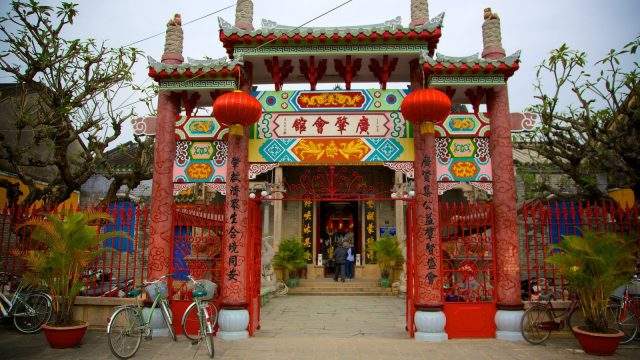
Assembly Hall of Cantonese Chinese Congregation (Photo ST)
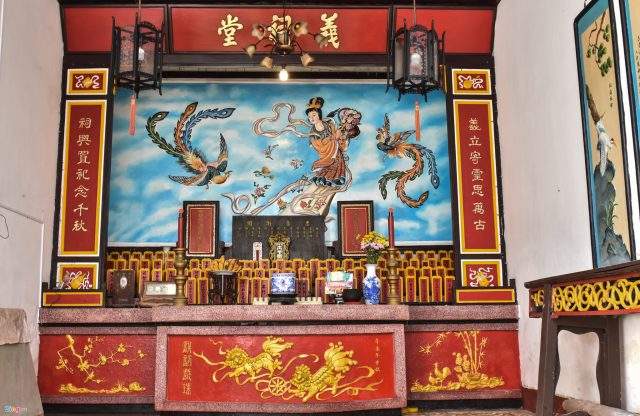
Assembly hall was built in the late 18th century by overseas Chinese from Guangdong – Guangzhou for construction design (Photo ST)
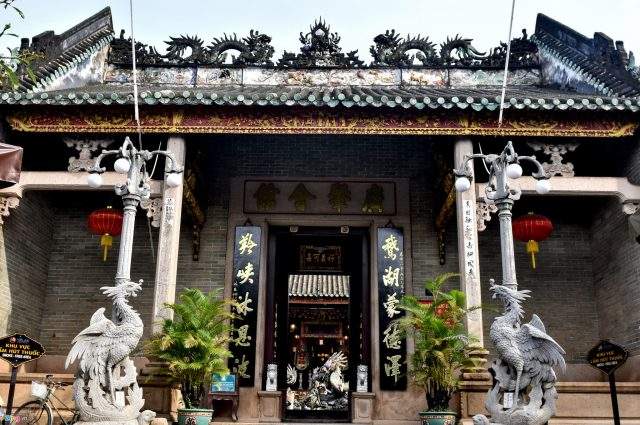
This has become a place of belief and a place to gather community and community activities, meeting regularly to help each other in business (Photo ST).
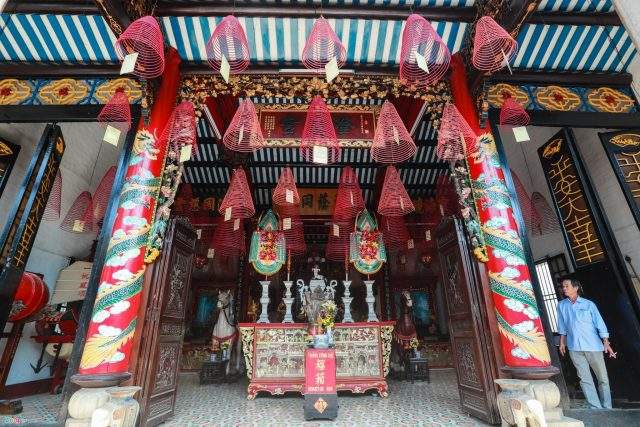
The art of using wood and stone harmoniously in bearing structures and ornate motifs gave the Cantonese Assembly Hall its imposing appearance (Photo ST)
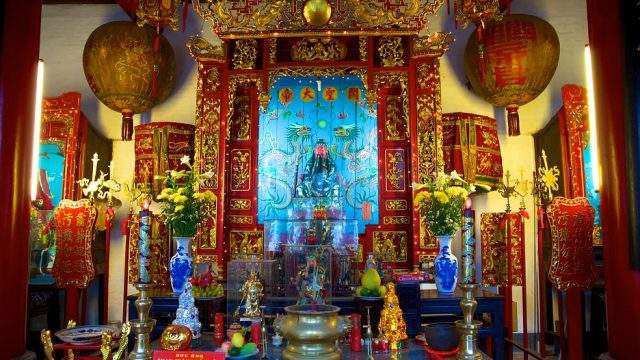
The main hall is divided into three spaces, and the nave is to worship Quan Cong (Photo ST).
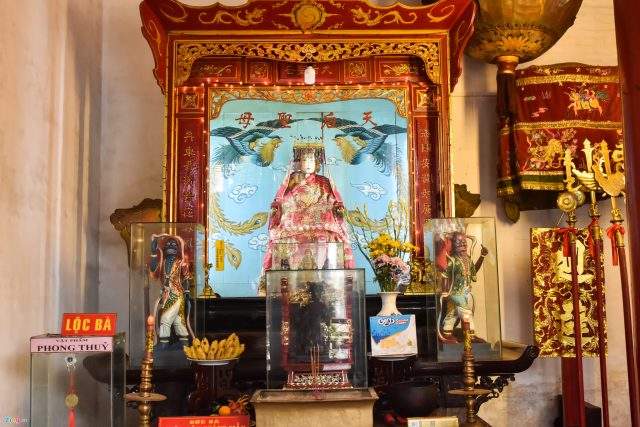
In 1885, at first, to worship Thien Hau Thanh Mau and Duc Confucius, after 1911, he changed to worship Quan Cong and Tien Hien (Photo ST).
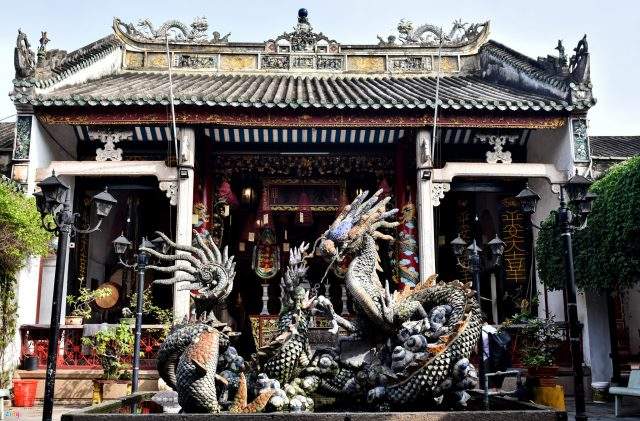
Step inside the yard and come to the fountains of the fountain, with majestic dragon statues (Photo ST)
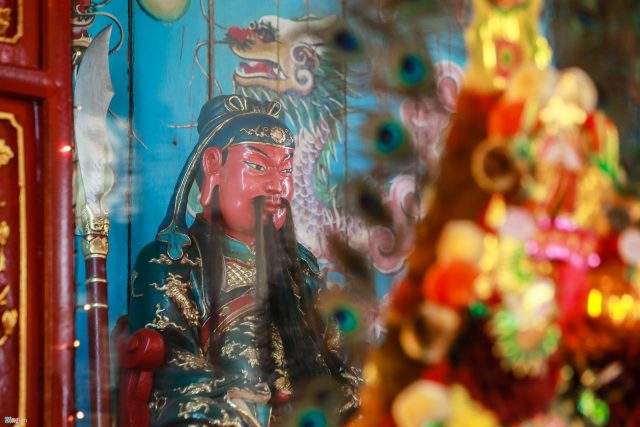
The space to worship Quan Cong, the symbol of loyalty and faithfulness (Photo ST)
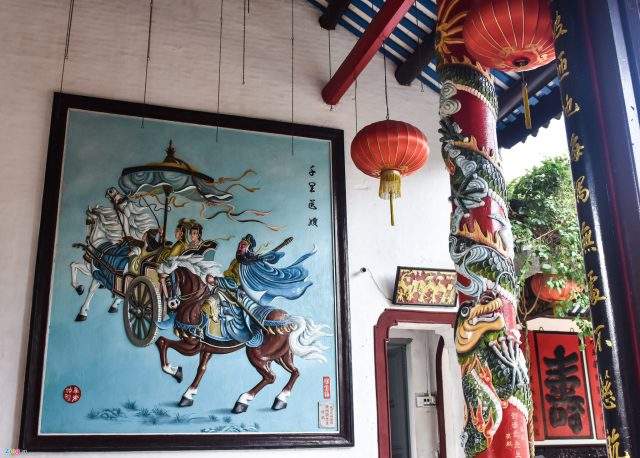
It still preserves many ceramic artifacts and images that simulate the plays of Cantonese culture (Photo ST).
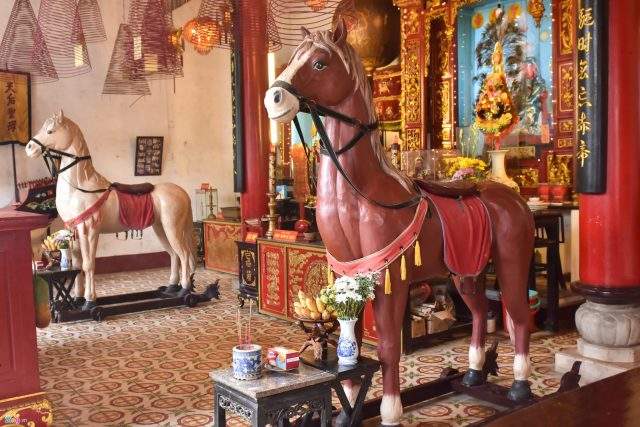
Every year, on the full moon of the first lunar month, the Cantonese Assembly Hall organizes the Nguyen Tieu festival, worshiping the ancestors of Tien Hien, which takes place vigorously with traditional rituals (Photo ST).
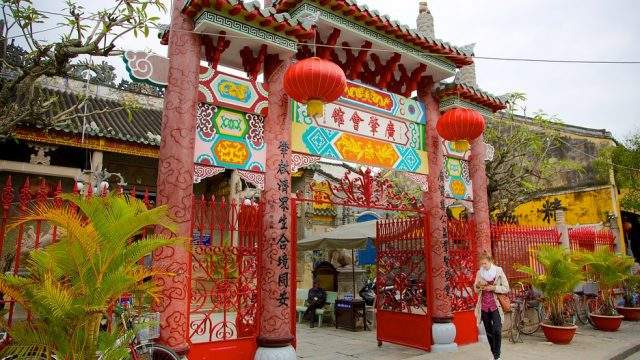
Located on Tran Phu Street, the Cantonese Assembly Hall is one of the famous relics of the ancient town of Hoi An that attracts visitors (Photo ST).
